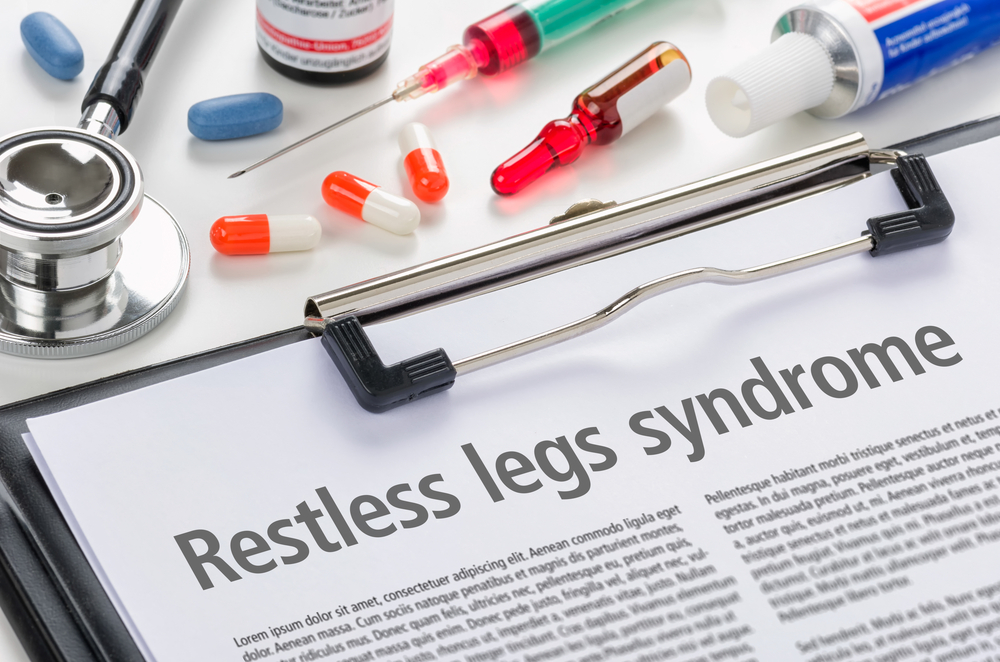Restless Legs Syndrome is a nerve problem characterised by uncomfortable sensations with the lower limbs and the compelling desire to move the lower limbs, generally only when trying to get to sleep. The weird experience, usually in the calves, may be described as a sort of cramp, soreness or simply a creeping, moving sensation. Suffers of this liken the experience to shooting darts of electrical power, or even invasive creatures within the legs. Often the feelings vary in extent from uncomfortable to annoying to painful.

By far the most distinctive characteristic of the condition is that lying down and trying to relax causes the feelings. Because of this, most of the people with restless legs syndrome have difficulties going to sleep and also remaining asleep. If this is not dealt with, the problem can lead to exhaustion as well as daytime low energy.
Individuals with restless legs syndrome sense unpleasant feelings in their lower limbs, particularly if sitting or when lying down, combined with an hard to resist craving to move the lower limb. Most of these sensations typically occur deep inside the leg, between the knee joint and ankle; and less frequently, they can affect the foot, thighs, arms, and hands. Although the sensations can occur on just one side of the body, they will usually impact the two sides. Because moving the legs relieves the discomfort, those with restless legs syndrome usually keep their lower limbs moving to reduce or stay away from the sensations. They will often pace the floor, continuously move their legs when sitting, and move around in bed.
A lot of people find the feelings of restless legs syndrome being much less apparent in the daytime and much more conspicuous in the evening or during the night, especially in the course of the beginning of sleep. For some people, the symptoms disappear by early morning, allowing for more refreshing sleep at that time. Other triggering situations are periods of inactivity such as long car trips, sitting in a movie theatre, long-distance flights, immobilisation in a cast, or relaxation exercises.
The reason is unidentified however individuals with a family background of restless legs syndrome make up around half of the cases, and people with low iron amounts or anaemia, chronic disorders like kidney failure, all forms of diabetes, Parkinson’s disease, and peripheral neuropathy, some women who are pregnant in their last trimester and people taking specific drugs seem to be more prone to get restless legs syndrome.
Restless legs syndrome can affect any individual of any age, although the problem is much more prevalent with advancing age. It happens in both genders, while the frequency might well be somewhat greater in women. From time to time individuals will encounter spontaneous reduction on symptoms during a period of weeks. Although unusual, spontaneous improvement over a time period of years can happen. When these kinds of improvements take place, it is usually during the initial stages of the disorder. Generally, however, the sensations become more serious with time.
The clinical diagnosis of restless legs syndrome can be hard to make. Physicians usually depend mostly on the sufferers descriptions of the sensations and details using their health background, including earlier health concerns, family history, and present medicines. Sufferers may be inquired about regularity, duration, as well as the level of the symptoms along with their tendency for day time sleep activities and sleepiness, disturbance of sleep, or any day time function. When a persons background is suggestive of restless legs syndrome, laboratory testing can be carried out to rule out other conditions and support the conclusion restless legs syndrome. Blood testing, assessments to determine electrical signals in muscles and nerves, and Doppler assessments in order to review muscle signals with the legs is often proposed. These tests can easily find any kind of associated damage or condition in the nerves and the nerve roots or another leg-related movement problems.
Advertisement:
- RELIEF OF AGITATED LEGS: Natural relief for the uncontrollable urge to jerk or move legs with accompanying occasional sleeplessness and disrupted sleep.
- EASY TO USE: Quick-dissolving tablets that melt in your mouth instantly to relieve itching, crawling, tingling legs and leg jerk with occasional sleeplessness and disrupted sleep.
- NATURAL RELIEF - MagniLife penetrating leg cream helps to relax and soothe the uncomfortable sensations that can make it difficult to fall asleep. Relaxing Leg Cream is a go-to when your legs just won’t stay still. Helps to calm the discomfort and restlessness so that you can get the sleep you need and wake up feeling refreshed and ready for whatever the day brings.
- ALL-NATURAL INGREDIENTS - Naturally derived, intense moisturizing herbal cream soothes aching, busy legs with magnesium, aloe, cudweed, lavender, sage and ylang-ylang. Our deep penetrating, non-greasy formula contains active ingredients to help deliver fast-acting, serious relief when you need it most.
- NATURAL RELIEF - MagniLife penetrating leg cream helps to relax and soothe the uncomfortable sensations that can make it difficult to fall asleep. Relaxing Leg Cream is a go-to when your legs just won’t stay still. Helps to calm the discomfort and restlessness so that you can get the sleep you need and wake up feeling refreshed and ready for whatever the day brings.
- ALL-NATURAL INGREDIENTS - Naturally derived, intense moisturizing herbal cream soothes aching, busy legs with magnesium, aloe, cudweed, lavender, sage and ylang-ylang. Our deep penetrating, non-greasy formula contains active ingredients to help deliver fast-acting, serious relief when you need it most.
I get commissions for purchases made through links on this website. As an Amazon Associate I earn from qualifying purchases.



